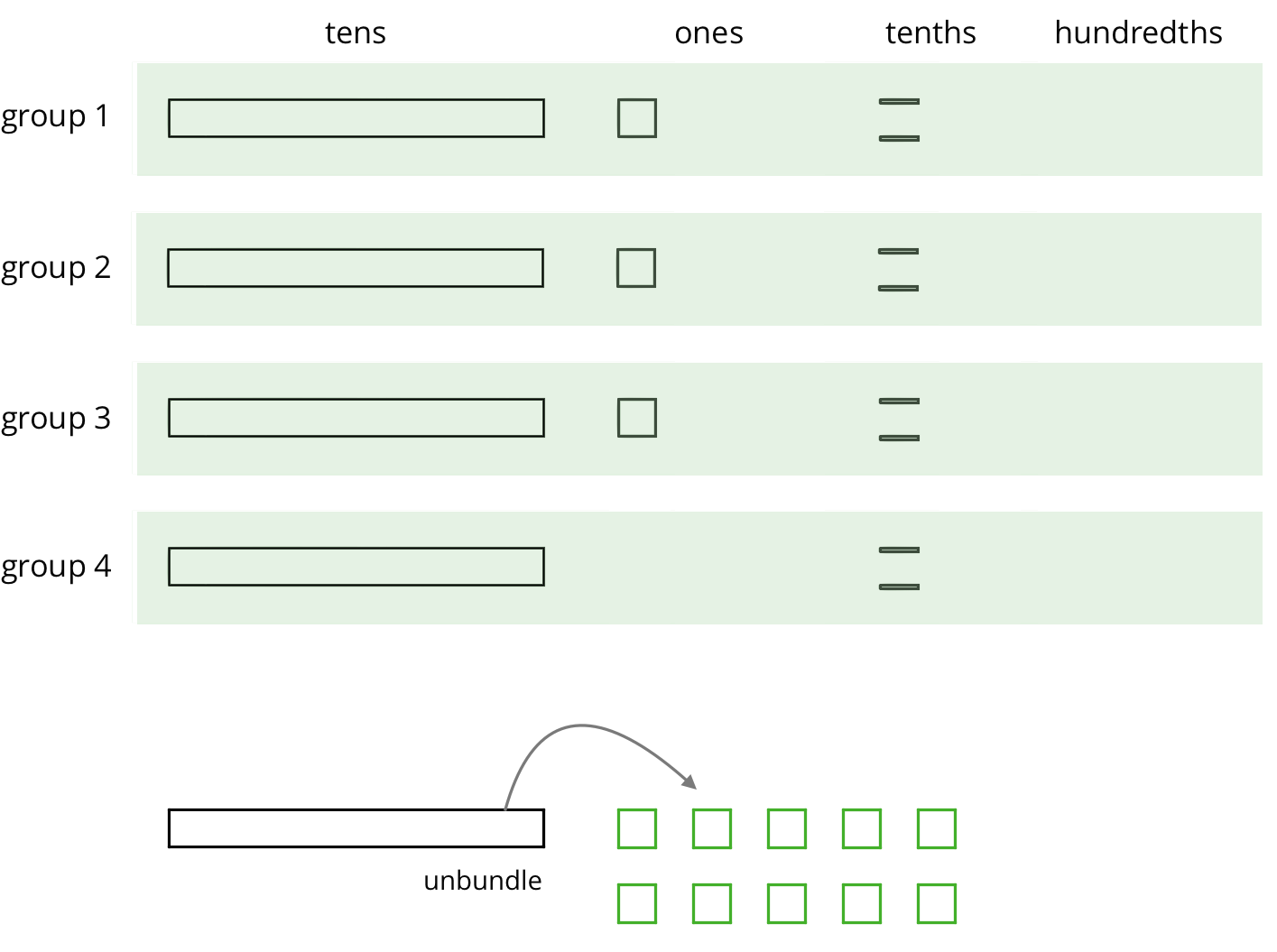12.1: Number Talk: Dividing by 4
Find each quotient mentally.
80 \div 4
12 \div 4
1.2 \div 4
81.2 \div 4
Let’s divide decimals by whole numbers.
Find each quotient mentally.
80 \div 4
12 \div 4
1.2 \div 4
81.2 \div 4
To find 53.8 \div 4 using diagrams, Elena began by representing 53.8.
She placed 1 ten into each group, unbundled the remaining 1 ten into 10 ones, and went on distributing the units.

This diagram shows Elena’s initial placement of the units and the unbundling of 1 ten.

Complete the diagram by continuing the division process. How would you use the available units to make 4 equal groups?
As the units get placed into groups, show them accordingly and cross out those pieces from the bottom. If you unbundle a unit, draw the resulting pieces.
What value did you find for 53.8 \div 4? Be prepared to explain your reasoning.
A distant, magical land uses jewels for their bartering system. The jewels are valued and ranked in order of their rarity. Each jewel is worth 3 times the jewel immediately below it in the ranking. The ranking is red, orange, yellow, green, blue, indigo, and violet. So a red jewel is worth 3 orange jewels, a green jewel is worth 3 blue jewels, and so on.
Analyze the dividends, divisors, and quotients in the calculations, then answer the questions.

Complete each sentence. In the calculations above:
Each dividend is ______ times the dividend to the left of it.
Each divisor is ______ times the divisor to the left of it.
Each quotient is _____________________ the quotient to the left of it.
Suppose we are writing a calculation to the right of 72,\!000 \div 3,\!000. Which expression has a quotient of 24? Be prepared to explain your reasoning.
Decide which of the following expressions would have the same value as 250 \div 10. Be prepared to share your reasoning.
We know that fractions such as \frac 64 and \frac {60}{40} are equivalent because:
Just like fractions, division expressions can be equivalent. For example, the expressions 540 \div 90 and 5,\!400 \div 900 are both equivalent to 54 \div 9 because:
This means that an expression such as 5.4 \div 0.9 also has the same value as 54 \div 9. Both the dividend and divisor of 5.4 \div 0.9 are \frac {1}{10} of those in 54 \div 9.
In general, multiplying a dividend and a divisor by the same number does not change the quotient. Multiplying by powers of 10 (e.g., 10, 100, 1,000, etc.) can be particularly useful for dividing decimals, as we will see in an upcoming lesson.